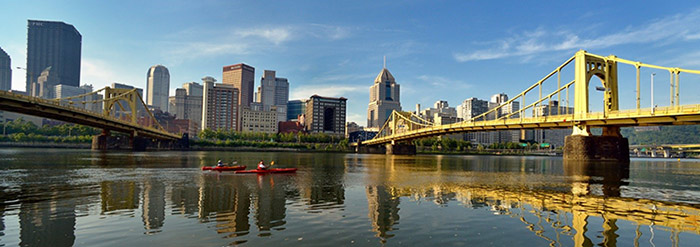By Hannah Lyons | Fri, June 16, 17
My immediate reaction upon learning of President Trump’s decision to pull out of the Paris Climate Agreement was to panic. Would this decision be an irreparable blow to our struggle to cut emissions? Would we have to resign ourselves to the idea that achieving the Paris Agreement’s climate goals would be impossible?
The Paris Agreement included the United States’ non-binding agreement to lower its greenhouse gas (GHG) emissions 26-28% from 2005 levels by 2025, as part of the agreement’s overall goal to avoid a global temperature increase of more than 2°C above pre-industrial levels. The United States’ commitment represented a significant portion of the global carbon reductions necessary to achieving this goal, compromising an estimated 21% of pledged emissions reductions through 2030.

Pictured: Not Paris
Reaction to the Withdrawal
There is a small silver lining, however, as the decision to withdraw has spurred a call to climate action throughout the United States, particularly for industry and state and municipal leaders. This indicates that the withdrawal may not represent a complete step backwards, but could incite a restructuring of the playing field for climate action, with the momentum shifting from the federal level to the state and municipal level.
Immediately following President Trump’s announcement to withdraw on June 1, hastened efforts were made by city and state leaders to join together to declare their commitment to the Paris Agreement. Several coalitions of leaders from all levels of government and industry have emerged in response to the announcement. One of the most high-profile of these coalitions is the United States Climate Alliance, which was formed by the governors of the states of California, Washington, and New York, and has since been joined by another nine states and Puerto Rico. Alliance members pledged to commit their states to achieving the climate goals set by the Paris Agreement. Additionally, another 10 states and Washington D.C. pledged to follow the Paris accord but have not formally joined the Alliance.
 More City and State Leaders Join Climate Action Groups
More City and State Leaders Join Climate Action Groups
At the local level, many town and city mayors have also pledged their commitment to the Paris Agreement. The Mayors National Climate Action Agenda, formed after the original Paris Agreement was signed in 2015, has since become known simply as the Climate Mayors. This group has seen a spike in participation since the Paris Agreement withdrawal, increasing from 75 members in February 2017 to 307 members as of June 14, 2017 (U.S. Climate Mayors). As a network of mayors committed to climate action, Climate Mayors also serves as a platform for the exchange of resources pertaining to municipal greenhouse gas (GHG) emissions reduction. Climate Mayors has several climate action plans available on its website from member cities and recently released the Paris Agreement Adoption Toolkit with resources to aid mayors of U.S. cities, towns, and municipalities of various size in adopting the Paris Agreement.
Additionally, a group of over 1,000 industry and government leaders organized by businessman and former Mayor of New York City Michael Bloomberg have officially coalesced under the name We Are Still In in support of the Paris Accord. The group includes leaders from 125 cities, nine states, 183 colleges and universities, and 902 businesses (including more than 20 Fortune 500 companies) representing a combined population of 120 million Americans and a net worth of $6.2 trillion. The coalition submitted a letter to the U.N. committing to uphold the emissions goals set by the Paris Agreement (you can still sign on via its website) and is currently planning the creation of a mechanism to track its members’ GHG emissions to eventually submit inventories to the U.N. This organization is still in its very earliest stages and holds incredible potential for acting on carbon reduction goals in the coming years, as an amalgamation of many different types of players and resources committed to climate action.

What Does This Mean for a Path Toward Carbon Reduction?
For communities wondering how they can contribute to climate action after the withdrawal from the Paris Agreement, NEEP is currently developing a resource for state and municipal leaders who wish to join with these organizations and commit to GHG emissions reductions in line with the Paris Agreement. The resource will provide resources for communities to plan and implement energy efficiency projects and carbon reduction strategies, and will become available in the fall of this year
The vigorous response by industry, state and municipal leaders to the United States’ withdrawal from the Paris Agreement reflects their commitment to climate action and their willingness to contribute to GHG emissions reduction. With often restricted local budgets, the sharing of climate-related resources online and the connections formed through climate coalitions will become increasingly important to local governments in achieving climate goals. It is important not to underestimate the potential consequences of the current administration’s decision to withdraw the United States from the Paris Agreement, but the action has set in motion many exciting new ventures with the potential to reinvigorate local collaboration and commitment to climate action.
